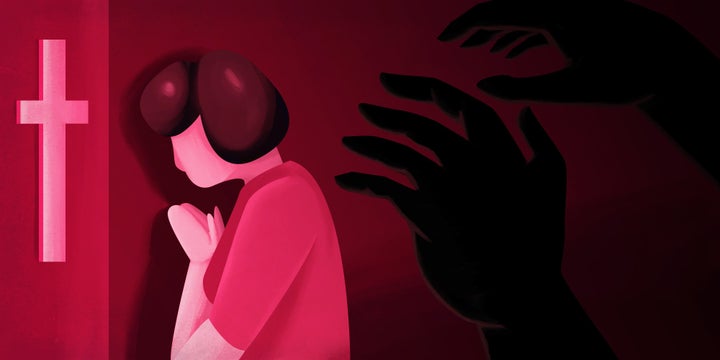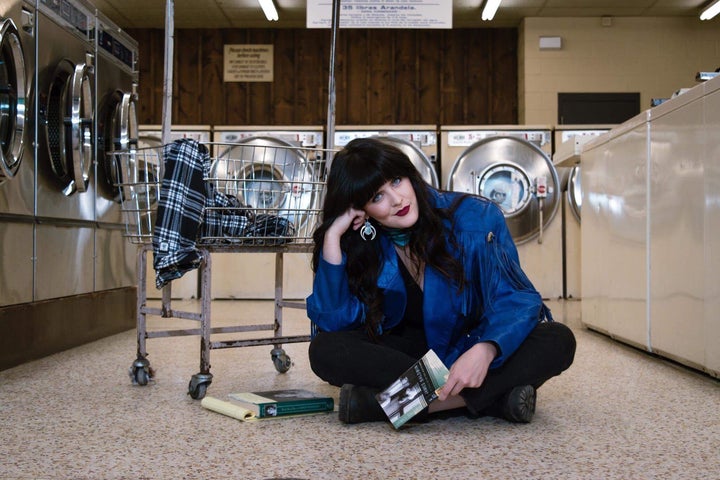
“Do I out my high school abuser?” she typed into the group chat on the night #ChurchToo was born. “Probably, huh?”
I knew the weight behind this seemingly nonchalant question. Years ago, when I first met Emily Joy, a college freshman at Moody Bible Institute, she was fresh off the evangelical assembly line. While still decidedly her own person, she had been indoctrinated with some views about holding hands with boys so strange that even my sheltered mind couldn’t quite wrap itself around them.
It took a few months of the late-night coffee dates and Bible school sleepovers that made up our budding friendship before she revealed her secret to me: that a church youth leader had groomed and manipulated her into a romantic relationship at the age of 16.
When the truth came to light, it was Emily who had been censured by her peers in the youth group, punished by her parents and generally ostracized from the cult of good reputation at her local megachurch. The last years of her teens were spent keeping to herself on the outskirts of the church and — thankfully for the world — writing a lot of angry poetry.
She told me of other victims who had suffered at the youth leader’s hands. Their names would echo through my head at the most inopportune moments: in the middle of chapel, in systematic theology class. The cognitive dissonance was jarring.
Recently, as allegation after allegation surfaced against powerful men in Washington and Hollywood, Emily and I realized that it was time to create space for survivors within the evangelical church and for those who have left its walls. So we launched #ChurchToo, a Twitter hashtag that quickly drew out widespread stories of sexual abuse and harassment. It was a reckoning.
For me, it was also the culmination of years of speaking out against and unlearning the strictures of evangelical purity culture.
It was around the time I met Emily that my own Christian nightmare began. Precocious, sheltered and only just 18, I was convinced that a campus full of fellow Christians would instantly be my 2,000 closest friends.
It came to my painful attention rather early on in my short stint at Moody that I was the odd one out, however. I alone had discovered lipstick, it seemed, and while my cleavage was always well hidden, I wasn’t the sort to hide my figure under North Face jackets and puffy vests. Couple those wardrobe choices with my open, responsive demeanor toward men, and it quickly became common knowledge around campus that I was the “loose woman” Proverbs 10 had warned about. I couldn’t fathom how I’d managed to become a slut as a virgin.
I fell into a deep clinical depression. Many days I couldn’t get out of bed. When I did, the glares of my fellow students would greet me as I walked through the coffee shop or the student dining room.

In the years that followed, Emily and I would create a joint blogging endeavor called The Purity Culture Rehab Project, in which we documented our own baby steps out of the physical and emotional abuse of purity culture — that theology of abstinence that singles out women and slut shames everyone who engages in any kind of sexual activity outside of marriage. Purity culture is the religious antecedent to rape culture, as it lays the bulk of the responsibility for maintaining the sexual purity of both genders on women’s attire and behavior.
Over a bottle of cheap gas-station wine, we planned out the things we would dare ourselves to do. Our first kisses. Asking someone on a date. Standing up to a catcaller, instead of walking faster and pretending not to hear.
As the project took off, the churches we participated in continued to shame us for our appearances, our presumed sexual activity and our inability to conform to the scriptural ideal of the woman with a “gentle and quiet” spirit.
#MeToo, spearheaded by black activist Tarana Burke, first surfaced 10 years ago, but only came to my attention last month. The hashtag gave me the courage to come forward with my own untold story of rape. Although it did not occur specifically within the church, the power of evangelical purity culture were such that, when I staggered home, still half-mute from the effects of the date rape drug I’d ingested, I was prepared to sweep the whole thing under the rug, blinded by guilt and shame. Surely I had brought this on myself. Surely it was my own fault.
Of course, it was not. But after it happened, I couldn’t help thinking about how I had learned to give precedence to men’s needs and desires. How I had learned to welcome the advances of those interested in me. How I had learned to question my own intuition, to overlook warning signs and red flags.
The deep cognitive dissonance of purity culture demands that women trust men as leaders, protectors and providers while blaming ourselves when our boundaries are inevitably crossed.
After I offered up the hashtag on Nov. 20, I went to sleep, expecting to see a few stories shared by internet friends and mutuals in my Twitter mentions the following day. I awoke to dozens of notifications from people I didn’t know or follow. By the end of those first 24 hours, the hashtag had exploded. Within 48 hours, people all over the world were sharing their stories of pain and abuse in the church. And every day, without fail, some white male pastor has attempted to discredit the movement and the survivors who have found their voice within it.
#ChurchToo is a platform not only where survivors can out their abusers — yes, names and all — but also where Christians, ex-evangelicals and agnostics alike can ask one another: How can we do better? What would a theology of consent and autonomy look like? How would we build a world in which that sort of church was not the exception?
The stories that have poured in through the hashtag prove to me that the evangelical church, in its current iteration, actively supports the confessing abuser over the victim and, in the name of “having no appearance of evil,” has managed to silence thousands of sexual and physical abuse allegations throughout the years.
We are saying “enough” now. There are decades-old stories with this hashtag. The rot has metastasized, and with #ChurchToo, we are digging it out. No rock shall remain unturned.
While hundreds of victims have come forward, the silence of prominent conservative and progressive church leaders — with a few notable exceptions here and here — has been deafening. We are long overdue for a theological upheaval in the evangelical church, not just one in which women, non-binary and transgender people ― particularly those of color ― are thrown the occasional associate pastorate position, but one in which people of all genders are celebrated and protected.
If you take nothing else away from #ChurchToo, what we hope you find is space. For those who have carried heavy burdens for many years or who are newly healing, for those who felt themselves silenced and their experiences erased, this hashtag is meant to be a place where survivors are heard, believed, seen and surrounded. The worst lie that victims of abuse can believe is that they are alone in this. With #ChurchToo, you are not alone.
